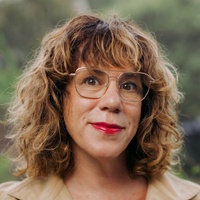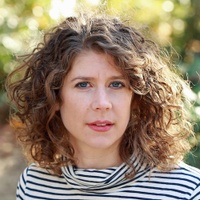On art as an archive of a life
Prelude
Jon Pylypchuk was born in 1972 in Winnipeg, Canada. He is a multidisciplinary artist who works in painting, sculpture, installation and video. Working with simple materials (fake fur, wood, fabric, sheet metal, beer cans, electric light bulbs, polyurethane foam, etc.), Pylypchuk reinterprets the collage and bricolage practices derived from Art Brut. His “creatures” often draw upon the animal world to explore the frailty of human existence and social relationships. Often his characters often seem to have lost their way, appearing in a wounded condition, harmed by either themselves or by others. He studied at the University of Manitoba School of Art, where he co-founded the collective known as the Royal Art Lodge in 1996 with fellow artists Michael Dumontier, Marcel Dzama, Neil Farber, Drue Langlois, and Adrian Williams. Its members were mostly graduates from the University of Manitoba, Canada who were united in their outsider status and who liked to break the unwritten rules of artistic production. In 1998 he moved to Los Angeles, where he is currently based.
Conversation
On art as an archive of a life
Visual artist Jon Pylypchuk discusses processing grief, getting out of a rut, and being a witch.
As told to Claudia Ross, 1811 words.
Tags: Art, Process, Identity, Mental health, Beginnings.
What’s your relationship to working with galleries and collectors?
It’s weird. It’s changed so much in the 25 years that I’ve been involved with art. I won’t say it’s unrecognizable from what it was 20 years ago, but there’s definitely a professionalism that takes the soul out of work for me. And I long to see that soul return.
What does that look like to you?
Well, if you look at Leo Castelli as being somebody who was also about artwork—he basically went to people who did other things for a living, and said, “This is important. This is something you should look at, and this is why it’s important.” We used to see that more frequently in the early 2000s, late ’90s, early 2000s. After the economy crashed in 2008, art adapted to what the collectors wanted, which really isn’t the best thing for art. I also struggle about the idea of art now being only about making objects. I think art is an archive of a life.
I see a lot of artists being, like, “I’ve got my shit, I’ve got my outlet, and we’re going to sell as many of these as we can.” And if any threads are out of line, then they need to be fixed, because that’s not professional.
I came up in a much messier art world. I’m sure that it exists, and I need to look harder for it, but I think that’s, to me, the main difference. LA used to be a place where it was significantly cheaper than New York. And as a result, a lot more novelty was created, because you could talk to people that weren’t thinking about the three jobs that they have to do. Artists here don’t have boredom time.

i will stop fighting you when death stops fucking with me, 2005, mixed media; 64 x 72 x 72 inches, 162.6 x 182.9 x 182.9 cm.
How did your show this year come about? Did it come from boredom time?
No, that came from intense time. One of my closest friends, when we were in midst of the pandemic, was always making art. And we were getting charged up from this excitement, like, “This is the moment where we’re all going to change, and it doesn’t need to be the same.” And I ended up visiting my friend, and the next day, he texted me, “I think I have COVID.”
I said, “I think you’re having a heart attack.” We always ended our texts with, “I love you.” And that was the last thing that he ever texted me.
So I’m dealing with this soul-crushing loss. I ended up making all these ghosts that ended up being shown in New York. But nothing was pre-planned. I wasn’t making it for the show. But it was all, like, using his socks, and things he owned. Hats and stuff like that. I started making bronzes.
Sometimes I think the best things that I make are straight out of, like, who knows where, and I’m lucky to be a conduit. It was not unlike in the early 2000s, when a lot of the work that I made was this fear that my parents were going to die, and then they died.
That’s so hard.
My dad would have been 100 years old this year. My mom was one of the youngest in her family. Everyone was old. We were in and out of the hospital visiting people all the time. People were croaking all the time. The only way we dealt with it was through humor. Sometimes awful humor.

i’ve got love for you, 2023, mixed media installation, dimensions variable.
I can see that. Your work reminds me of the way that people actually mourn.
I remember when I was a kid, so many family members had died, and my mother had congestive heart failure and we were in the hospital. And the doctor’s like, “Do you have a sister?” To my mom. And she said, “Yeah.” And the doctor goes, “She’s one floor above you.” She had congestive heart failure on the same day. So, that was hilarious.
And I go up to her room. She’s sitting on her hospital bed. And I said, “Are you going to die? Do I have to go casket shopping?” And she’s like, “Oh my god, Jonathan. I’m not dying today.” And I’m like, “Okay.” And she says, “do me a favor. Find me an orderly, and get me a cigarette.”
That’s the kind of people my family comes from. And that was the way my young life had started—with death.
When you finished making that show did you feel a catharsis from the grief over these deaths?
It definitely was, but, unfortunately, like, too much of a catharsis in some ways. Because I am finding it hard to make new things.

l, 2023, found object rug with fake fur; 60 x 96 inches, 152.4 x 243.8 cm.
How do you handle these liminal moments where it is hard to create art?
Probably with gratitude and fear. This is the third or fourth time where I’m like, “Okay. It’s over. I’ve got to get a teaching job.”
I think that community-building is important, and I’ve been trying to do more of that. The most prolific output was during the early 2000s in Chinatown where we spent five nights a week working and talking with artists, writers, and actors. Cross-pollinating ideas. I’m sure those spaces exist for younger people, but I don’t know.
I don’t know if they do. The art students that I know seem much more commercially-minded.
I made this comment to somebody this week on Tuesday in a painting class, and this person was talking about that.
He was saying, “How do I put this work in front of this group, or should I not go for that group? Should I go for this group?” And I was like, “You named the band before you wrote any songs.” Like, write some songs, then name your band and figure out what you’re going to wear.
And I get it. If you’re paying $3000 a month for your apartment, and you’re working three jobs to be able to just do that, I imagine you’re probably going to think, “Well, how do I get out of this? I’m going to make the thing that’s going to make me the most money.” Which is not an ignoble thing to do when you’re coming out of grad school with a ton of debt.
But it seems that in ecosystems like LA or New York, the artists have a harder time making the work, and the collectors have a harder time buying the work that is harder. In other places, though, people don’t always think of collecting as accumulation. They think of it as stewardship, and then all you’re doing is saving a bit of humanity.

the pack (i will always love you), 2010, spray foam, exterior house paint, denim, metal, spray paint, resin, wood, and lightbulbs; 60 x 60 x 24 inches, 152.4 x 152.4 x 61 cm.
I completely agree. I really liked the show you curated at Megan Mulrooney. Is curating a kind of community building for you?
That was part of the idea. In 2013, a friend of mine and I opened a gallery in downtown LA. At the gallery, we didn’t have a desk, we just had a giant table. So, if anybody came in, there was a lot of conversation. You would come to see the show, and you’d go upstairs and see what everyone was doing. Collectors come in, and they’re almost ignored, but commerce gets done to make sure that the doors and lights are still open and on for the following weekend.

i have thought deep through this trouble, 2005, mixed media on panel; 60 x 48 x 2 inches, 152.4 x 121.9 x 5.1 cm.
Do you feel like there are ethical boundaries that you have as an artist?
An artist is usually either a witch or a businessperson. I fall into the witch category. The few times that I’ve tried to put myself into the businessperson category, it’s not been very satisfying. So the only ethics that I try and follow is not to be a businessperson. I try to be sincere as much as I can.
How has your approach to artmaking changed since you were starting out?
When I was having a lot of success in my early career, it was really easy to not pay attention to what I was doing. Then one day, I realized that I bought a house in Canada. And then, all of a sudden, I was like, “Oh, I’m good at this. People think I’m good at this.”
But it was in that moment of self-consciousness that I really started to disassemble anything that had brought me to that point. It was this weird struggle of getting to where I felt like I had nothing left, and then, in that despair, having this resurgence where all of that sincerity comes back. Then you realize that you’re good at it again, and then you’re like, “I’m good at this,” and then you can’t make work anymore.

You are covered sweetness, we outlast this worn out time, 2019, fabric, wood glue, watercolor,glitter,black cue balls, polyurethane, wood, on linen on panel; framed Dimensions: 63 1/2 x 93 1/2 x 3 1/4 inches, 161.3 x 237.5 x 8.3 cm.
What is the resurgence like?
I used to listen to Katy Perry’s “Firework” over and over again. As a self-help motivational, listening to “Firework” over and over again in my studio, embarrassingly dancing around to it. I almost get into, like, a trance. Thinking like, “I’m a firework. I know I’m a firework.”
And then I would look at the work after, and say, “How did I do that? I don’t know how I just did that.”
Because I was a firework.
Because I was a firework.
Jon Pylypchuk Recommends:
I would cross a freeway for divacorp_usa
Kyle Chayka’s book Filter World
Artist Eric Wesley
Fiona Apple, Fetch the Bolt Cutters album
Walking

Untitled, 2021, six elements: High Polish Bronze; overall installed dimensions: 17 x 22 x 20 inches, 43.2 x 55.9 x 50.8 cm.
[Credit for all images: Courtesy of the artist and Petzel, New York.]
- Name
- Jon Pylypchuk
- Vocation
- visual artist
Some Things
Pagination



